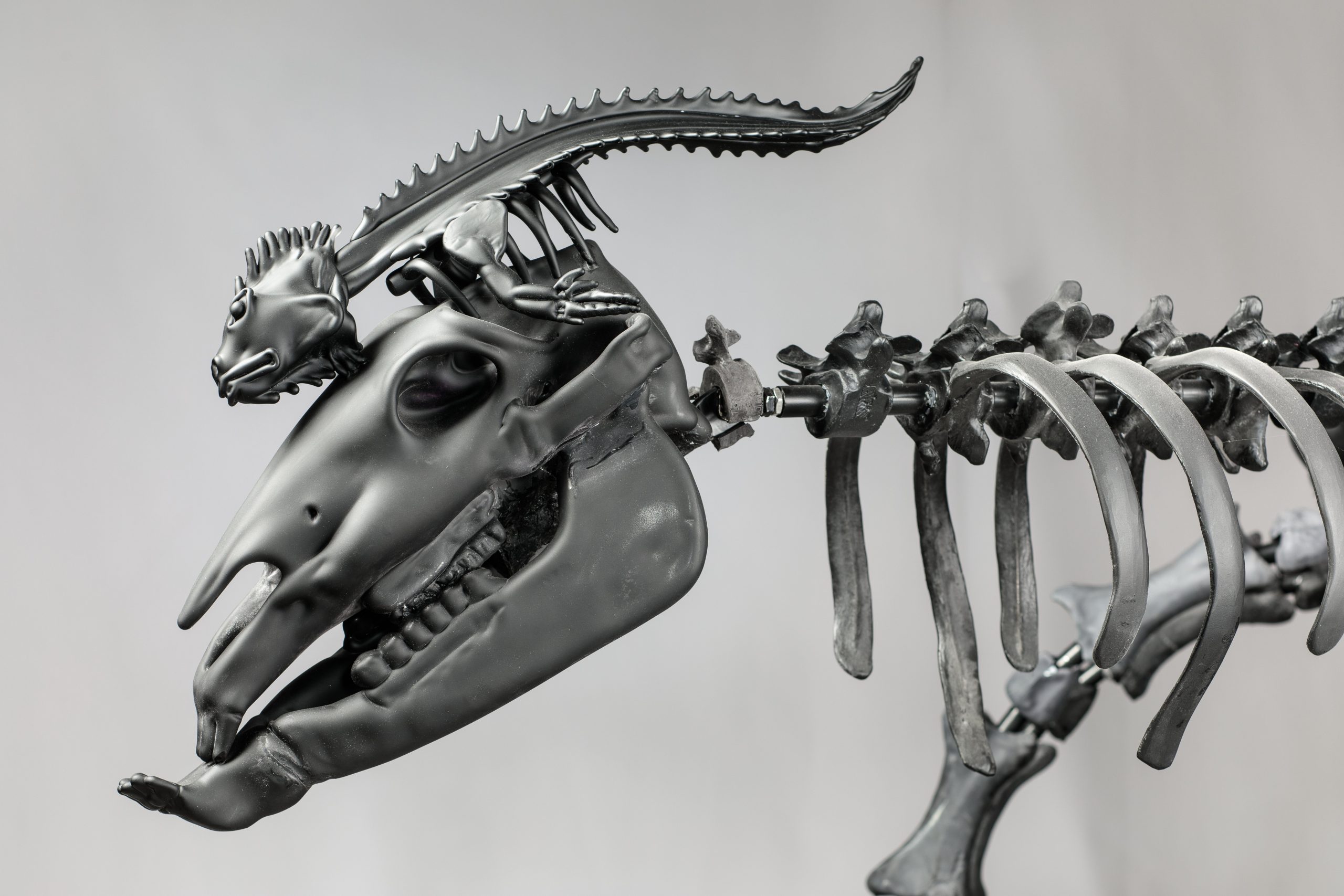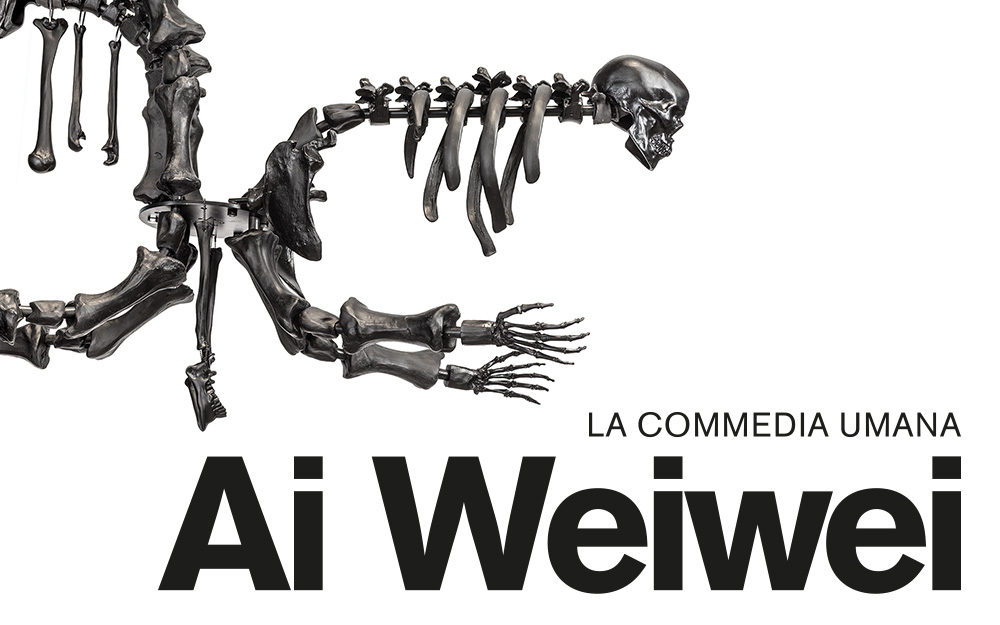Museo Nazionale Romano and Berengo Studio are delighted to announce the debut of La Commedia Umana by Ai Weiwei in the Baths of Diocletian. One of the largest works ever created in Murano glass the hanging sculpture is composed of over 2,000 pieces of blown and cast glass, weighing around four tons, measuring 6.4 meters wide and a staggering 8.4 meters high.
The monumental sculpture is the result of a three-year collaboration between the famous Chinese artist and activist and the Italian glass studio. Although the sculpture was started well before the outbreak of COVID-19 the vast hanging installation composed of a series of hand-crafted black glass bones and isolated organs comes together to form a striking monument to the lives lost over the course of the pandemic.

Ai Weiwei oversees the installation of La Commedia Umana at the Terme di Diocleziano, Rome – Photo credit Daniele Peruzzi
The artist notes how glass is “a pure material because it requires a struggle for the work to take shape,” and it is this internal struggle that made it the perfect medium to realise such an ambitious project. Each fragment was hand-made in Berengo Studio, using a combination of traditional and avant-garde techniques, both in the furnace and the casting studio. This split between various types of technical work brings a dynamic energy to the final artwork that appears to cascade down from the ancient framework of the Baths of Diocletian, one of the largest and most impressive of its kind in the ancient city.

Ai Weiwei, La Commedia Umana (detail) – Photo credit Francesco Allegretto
La Commedia Umana is a work that “attempt[s] to talk about death in order to celebrate life,” Ai Weiwei has observed. It is also an artwork that has continued to grow and evolve through the connotations of its morbid framework of body parts. First it became a metaphor for the pandemic itself, a vivid physical representation of the loss endured by so many over these last few years. Now, in light of a new war, La Commedia Umana garners more disturbing connotations, a totem to loss of all kinds, a monument to the dead that emerge from all kinds of conflict, not merely those who die from a virus, but those who die at the hands of other humans.

Installation progress of La Commedia Umana, Terme di Diocleziano, Rome – Photo credit Daniele Peruzzi
La Commedia Umana is not merely a monument to human loss. It is also a warning, a sign that cautions its audience to think about the future, a reminder that we all need to work together so that we may leave behind more than the bones of our broken bodies. If we refuse to listen? As the title of the artwork suggests, the final joke will be on us.

Ai Weiwei, La Commedia Umana, Terme di Diocleziano, Rome – Photo credit Daniele Peruzzi
The artwork will be on show in Rome from 25 March till the 3 April 2022 for more information please visit the Museo Nazionale Romano website here.
Coinciding with this unique installation the Galleria Continua opens an exhibition of Ai Weiwei’s work in Rome Change of Perspective which runs from 25 of March till 22 May 2022.


Recent Comments